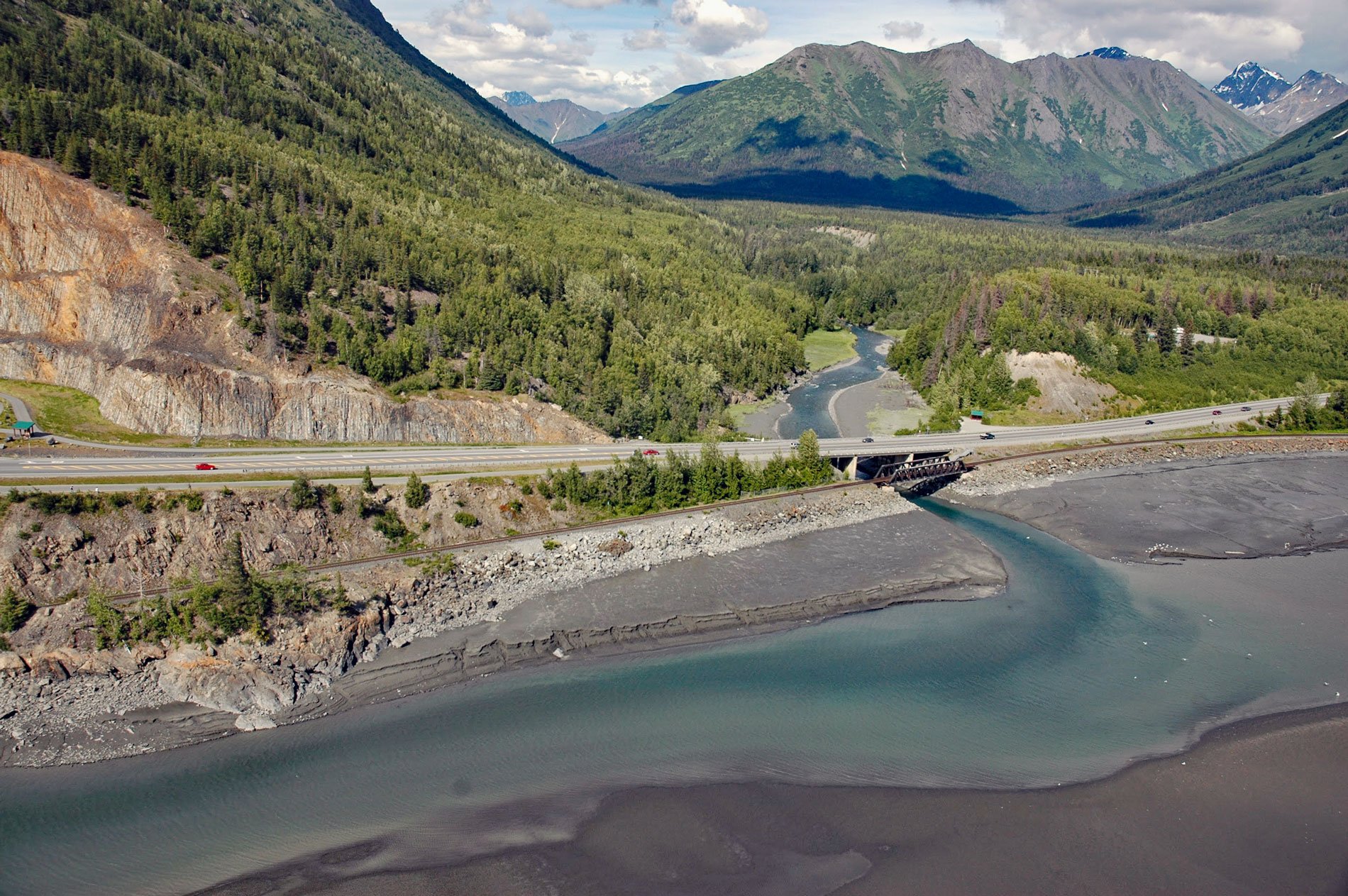Bird Creek starts in the Chugach Mountains and flows southwest for 16 miles (26 km) to Turnagain Arm, about 22 miles (35 km) southeast of Anchorage and 12 miles (19 km) west of Girdwood, Alaska. The creek name was used by local miners and first reported in 1900 by Walter Curran Mendenhall of the U.S. Geological Survey.
In 1897, a small group of miners staked claims on Bird Creek, and by 1900, six miners had started a settlement. Although mining was never profitable, the construction of the railroad from Seward to Anchorage stimulated the growth of this small settlement. In 1909, a sawmill was moved from Glacier Creek near Girdwood to Bird Creek to provide timber and pilings that would extend the railroad from Kern Creek west along Turnagain Arm. The sawmill employed 35 men, ten horses, and a steam donkey engine. Weekly mail service from Seward began in 1914. Railroad workers were stationed at the Bird Creek section house which also served as a flag stop along the tracks until the 1950s when the Seward Highway opened providing easier access to the Bird and Indian Valleys. In the 1960s, ten couples combined their resources to purchase the Charles Pierce homestead on Bird Creek and soon more families settled on the old Bystedt homestead.
Until 1996, Bird Creek was the location of the Bird House, a famous tavern for 1970s era pipeline workers, skiers, and tourists looking for a uniquely Alaskan experience. The tavern was in a funky, one-room circa-1903 miner’s cabin, and owned by prankster Dick Delak who was also the bartender. The Bird House burned to the ground in 1996 but has since been resurrected in Chilkoot Charlies, another establishment with a lot of character in Spenard. Read more here and here. Explore more of Bird Creek here:

